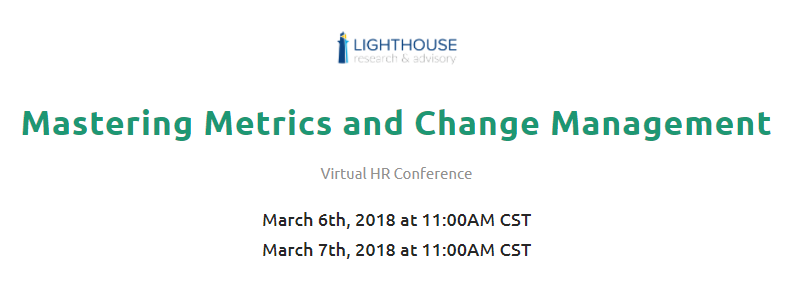
Thank-you to all of our regular readers of the blog!
If we can assist you in any way please do not hesitate to get in touch at http://www.psychpress.com.au, or contact us at info@psychpress.com.au
Wednesday, 28 February 2018
Guest Article: The Best Form of Self Interest by Jay Kuhns, SPHR
Them, and Me
One of the challenges I face in my leadership practice is balancing my nonstop desire to push harder, faster, and better than my competition; and, understanding that the risks involved with my leadership personality can create casualties.
Casualties, on my team.
Understanding my role when mistakes are made, as well as the others involved, is more complicated than it sounds...at least for me. You see, I have this fairly large ego that continues to get in my way. My intentions are good, and often the results are rock solid, but it's the occasional collateral damage along the way that is unacceptable.
Is every miss my fault? Of course not. But every one of my reactions is completely on me. No one "forces me" to react too strongly. No one requires that I have a quick response that sometimes could be perceived as harsh. I am the only one who has the power over my responses.
Finding Forgiveness
When I find myself moving too quickly (which happens a lot) I need to build a new step into that frenetic pace. A step that allows me to ensure my words match the situation. And when I miss the mark, or realize that even though the "other person" made mistakes, I still need to lead the way.
I need to lead the way, every time.
If we think about forgiving those around us that make mistakes vs. running them over with our frustration and disappointment in their performance, a couple of interesting things happen.
First, forgiveness is not about the two people involved exclusively. Forgiveness is about resetting how the world is supposed to work, far beyond individual relationships.
Second, forgiveness, through that re-alignment, creates opportunities for individual forgiveness to be effective and long-lasting.
How About You
Is forgiveness a sign of weakness, or an attempt to simply 'forgive and forget?' We actually never forget; but when we focus on a more global reset, along with the individual healing that goes along with it, we demonstrate for our teams that forgiveness is actually a powerful leadership tool.
What do you think?
I'd love to hear from you.
No Excuses.
pic
Article source:Jay Kuhns, SPHR - The Best Form of Self Interest»
Check out more of Jay Kuhns' work at No Excuses HR
Monday, 26 February 2018
Guest Article: Case Study: Using Hackathons to Attract, Develop, and Engage Talent by Ben
“This message will appeal to people in our recruiting process who gravitate towards a culture of hackathons and innovation. It will also turn away others that don’t fit.” Gary Bolton, Vice President of Marketing at ADTRAN
I recently had the pleasure of connecting with a handful of key staff members at ADTRAN in Huntsville, Alabama, to discuss the company’s innovative internal engineering hackathon program. The firm has more than 2,000 employees and is headquartered in Cummings Research Park in Huntsville, the second largest research park in the United States. It also has offices in Germany and India. The company is known locally for its innovation, and the staff credits its continued innovation in part to the hackathons and the type of culture those activities promote.

May Chen, Software Engineer at ADTRAN
The hackathons are events “by engineers, for engineers,” according to May Chen. This was a grassroots program launched by three of the firm’s 400+ engineering staff, but support goes all the way to the top. Chen, one of the leaders of the initiative, said “We’ve had tremendous support. Business, IT, strategy, R&D–all the business units believe in what we’re doing.” This concept of ownership and self-leadership was echoed by the company’s marketing leader: “This is definitely organically steered. Leaders stay out of hackathon management and leave it to the engineering staff.”
And while hackathons also happen as community events in many locations across the world, there is something special about having this happen within the walls of the company. Kaley Schweikart, Human Resource Leader – Americas, explained, “This lets them do these internally instead of outside. It helps the workers and us as a company to grow and foster an innovative and creative team and culture.”

This wall within ADTRAN headquarters displays its many patents, a testament to the firm’s culture of innovation.
However, the idea of innovation at ADTRAN didn’t just start here. Prior to the launch of the hackathons, the company ran a series of “coder dojos,” focusing on internal and external participants. For instance, families were welcome to participate and the content focused on beginners and advanced tracks. This was the 1.0 version of the company’s attempt to harness innovation on a broader, more structured scale.
Switching this to a more internally-focused hackathon also took several iterations. In 2013, the practice started very slowly. To launch the program, the team needed to get buy-in from the firm’s leadership. R&D wasn’t fully on board with the idea of hackathons initially. After all, it’s a significant investment of resource costs. Workers spend approximately one day coding and working and half a day presenting and demoing their solution. One of the initial negotiation points for launching the hackathons was that they must be business related, but this later changed when the value of the events became clear. By 2014, the hackathon events were a standard practice within the company.
Today, there is an incredible amount of excitement among the employee base for the regularly scheduled hackathons to occur. The events are consistently growing in terms of participation rate, and recent events have had between 70 and 100 participants out of an engineering population of 400-500 workers. Additionally, the events have picked up in interest from those outside engineering, widening the participating audience to include IT, marketing, user experience, manufacturing, and other areas of the business. For example, one of the marketing team members works with the hackathon committee to develop collateral and signage promoting the hackathons. The leadership of the company sees this as “an opportunity to create relations that transcend work and functional boundaries.”
But what are the actual outputs? To look at this from a practical angle, outsiders often wonder what sorts of outcomes result from the investment in a hackathon. For the team at ADTRAN, there are numerous outputs both tangible and intangible. Tangible results include one proof of concept that reduced processing time for a work process by an order of magnitude, greatly improving productivity. Another was teaching engineers a new programming language by creating simple applications using the specific target language. Finally, another example of innovation is the virtual test bed, a solution that allows the engineering team to simulate hardware and software usage without requiring thousands of dollars of actual hardware.
On the intangible side, one of the key benefits is allowing participants to leverage skills and strengths they might not use in their daily workflow, such as project management skills or more specific technical skills related to a task or process. Additional value points from a human capital perspective are explored in the section below on unintended benefits.
Hackathon Logistics: How It’s Done
Hackathon events currently happen on a regular cycle at ADTRAN. Three times a year the firm dedicates one and a half days to the internal hackathon, enabling workers to focus on other projects and innovations that might fall outside the scope of their daily work.
The committee starts with a training workshop for people unfamiliar with the themed topic. In this session they offer participants a use case and tools to use. Additionally, for those engineers that don’t have a dedicated project they want to pursue, “seed” projects can be provided for those new to hackathons to help ease them into the process.
What follows is a fairly intense day-long dive into the team projects. Engineers work in focused bursts over eight to ten hours to make as much progress as possible in the dedicated time slot. Their end goal? Presenting a five to eight minute presentation about their project in hopes of getting it funded. The actual presentation time, while short, gives each a chance to explain the concept, show off any models or prototypes, and then comes the fun part: teams are subject to unlimited Q&A time to allow participants the opportunity to ask questions, dissect ideas, and fully grasp the concept and its impact.
This “demo day” takes place the day immediately after the workers have hacked their specific area of focus. The only requirement for participating in the hackathon is that the team must also participate in demo day to show off their work. The company sees this as a combination of springboard for new ideas that the workers can’t get to in their day-to-day as well as an opportunity to explore new technology (such as the artificial intelligence example above).
The Intended (and Unintended) Benefits of Hackathons

Kaley Schweikart, VP HR – Americas at ADTRAN
Plus, with a greater focus on skills acquisition in today’s workplace, the hackathon events provide a powerful way to not only teach a new skill, but offer an immediate opportunity to apply it in practice. For instance, the advent of more artificial intelligence and machine learning technologies in the marketplace has the engineers hungry for skills and knowledge on those topics. In a recent AI themed hackathon (the topic was voted on by the engineering staff, not dictated by company leadership), the group used a short, structured learning workshop to educate workers on the basics of AI/ML, then they were encouraged to put those new learning concepts into practice by developing a program or improvement using those ideas.
This acquisition of new learning skills is a powerful concept as research tells us that developmental opportunities are the number one predictor of employee retention.
Sjohn Chambers, one of the company’s engineers, explained, “We have this hackathon culure internally. For the last three years, I’ve really hated if I had to miss a hackathon for some reason. The engineers all look forward to this.” In addition to the specific process of hacking, Chambers also said this is woven into his own performance review process. “The hackathon projects and results are a part of my performance reviews and my own career development. My manager and I have these kinds of discussions regularly.”
While these were started with the hope of driving creativity and innovation among the engineering population, the company’s leaders quickly realized there were some unforeseen benefits to creating this type of initiative. For instance, the VP of HR for the Americas, Kaley Schweikart, told me that the company couldn’t have used advertising or other media as effectively as the word-of-mouth that results from the innovative culture the firm has created. She credits the success of the ongoing college co-op engineering program in part to the hackathons. The firm funnels around 160 co-op students through its engineering department each year.

Gary Bolton, VP Marketing at ADTRAN
Additionally, the Vice President of Marketing, Gary Bolton, confirmed that the hackathons were a key differentiator in the hiring process. Recruiters talk about the events with candidates as a way to demonstrate the unique culture of the firm, branding ADTRAN as a fast-paced innovator, which some might not expect from a 30+ year old firm.
When competing with high-tech firms like Google and Facebook for software developer talent, employers like ADTRAN can use hackathons to stand out competitively from an employer branding perspective.
More broadly, ADTRAN is the largest patent holder in Alabama. The company has 60% more patents per R&D dollar invested than the industry average, and more than 21% of revenue goes into R&D on a regular basis to keep the innovation at the front of the market. In the image above you can see the company’s internal wall dedicated to the patents it holds. For a company dedicated to improving its innovation and innovative capabilities, there is no higher honor than that level of recognition.
The AAR: Wrapping Up a Great Hackathon
Obviously the team hopes that each hackathon event will bring creative new ideas to the forefront, but it doesn’t take that for granted. The three organizers and the hackathon committee of eight engineers gather for an after action review to dissect each event and understand what worked and what didn’t. This retrospective offers valuable insights.
Sjohn Chambers, one of the participating engineers, said, “Honestly you can learn as much if it fails as if it succeeds. Not all projects are ‘successful,’ and success is relative.”
As a team, the group ask questions in the review about what was learned, what went wrong, and what went right. In addition, time is spent on exploring what to change for the next session to improve it even further. Despite having several years of hackathons under their belt, the team is still learning, a testament to the culture of continuous improvement and innovation.
In the video below, the hackathon component of the company’s innovation journey is mentioned starting around 1:33.
Article source:Ben - Case Study: Using Hackathons to Attract, Develop, and Engage Talent»
Check out more of Ben Uebanks' work at Upstart HR
Guest Article: Leaders Who Know When to Shut Up Get Better Ideas from the Team by Jennifer Miller
For many years, I worked with a highly effective (and very respected) leader named Jack, who at the time was a senior executive at a large insurance company.
After working together on a few corporate projects, Jack asked me to lead a three-day strategic planning session for his team. About two hours into the first day of our meeting, I noticed something unusual: Jack had contributed very little to the discussion. Aside from opening remarks and the occasional clarifying statement, Jack sat leaning back in his chair, quietly observing.
This “quiet Jack” was a departure. My interactions with him were usually conducted with groups of 3-4 people, in which his demeanor was assertive, sometimes to the point of being confrontational. Known as a hard-charging, results-oriented manager, Jack liked to “stir the pot” in small group settings to challenge people’s assumptions and test their convictions.
Why the quiet stance? I asked him at a break on the second day. “Because if I don’t shut up and listen, I won’t learn anything,” he replied.
Fair enough. (Jack is a man of few words. That was the sum total of our conversation.)
One of the reasons Jack was so respected as a leader is that he had learned to distinguish the circumstances under which he should speak up—and those in which he should stay silent. In small group meetings, his aim was to move the conversation along with his challenging statements. In a larger group setting (in this case, a strategy-setting meeting), Jack knew that it was important to hear from all parties without influencing them with his opinions.
Although most leaders would say they want to foster a speak-up culture, many are inadvertently quashing ideas before they can come to light. As this white paper on Groupthink by Northwestern University’s Arpita Das Behl explores, numerous studies have shown that when leaders state their opinion, the group tends to move their opinions towards those of their leader. This form of “follow the leader” often leads to erroneous assumptions and faulty decision-making.
When deciding whether or not to speak up in a group setting with your team, answer this question:
Will adding my input draw attention to me as a leader and away from the focus at hand?
For example, if you say, “I think we should …” or “My viewpoint is …” you’ve brought yourself into the conversation and might unduly influence the team’s opinions on how to proceed.
This idea of leaders who understand the importance of leadership silence was recently driven home during an HR executive panel I attended in Phoenix last month at the WorkHuman conference. Vicki Williams, the senior vice president of compensation, benefits and HR information systems for NBCUniversal, told the audience that a mentor once shared with her: “Leaders who don’t listen will soon find themselves with people who have nothing to say.”
Williams said that this advice has guided her throughout her career. And, as a leader of leaders, it’s wisdom she readily passes along to her team.
Adam Grant, professor of management and psychology at The Wharton School and author of books including “Originals: How Non-Conformists Move the World,” spoke at the same WorkHuman conference. He echoed Williams’ line of thinking when he said leaders need to “make it safe for team members to exercise voice.”
As a leader, if you must speak, says Grant, speak after everyone’s input has been heard. And, as Grant offers in this interview with Marketplace’s David Brancaccio, if you’re an extroverted leader, you’re going to have a more difficult time zipping your lip.
Extroverts, says Grant, “love to be in the center of attention.” And this need for the spotlight can draw attention away from less talkative members of the group.
At your next meeting, take a page from my mentor Jack and remember that the best way to learn something is to shut up and listen. If inspiration strikes you in the middle of the team meeting, and you’re worried you’ll forget that great thought, jot it down. If the idea is truly that fantastic, it can wait. And it’s highly probable that in the silence of your listening, an even better idea will soon emerge from the group.
A modified version of this post appeared on SmartBrief and is reprinted with permission. It was one of SmartBrief’s top leadership posts of 2017.
Image credit: Pexels
Article source:Jennifer Miller - Leaders Who Know When to Shut Up Get Better Ideas from the Team»
Thursday, 22 February 2018
Guest Article: Supporting Black History Month by Melissa Fairman
Article source:Melissa Fairman - Supporting Black History Month»
Check out more of Melissa Fairman's work at HR Remix
Wednesday, 21 February 2018
Guest Article: Blessings by Jay Kuhns, SPHR
Often the world of work is no different. I hear the cries to be different, to embrace innovation, and to be more progressive. Then all of the close-minded biases raise their ugly heads and the organization (and it's people) suffer.
Work Blessings
As I reflect on the polarized world we live in, it strikes me that I have an awful lot to be thankful for in spite of all the noise. It's too easy to fall into the trap that everything around us is "bad."
That's simply not true.
While I may be repulsed at the behavior of our political leaders, I certainly have other leaders in my life who are nothing short of world-class. I work with a team of people who are committed to doing their best work every day...and it shows...as the results of their work has allowed my company to grow at a dramatic rate.
Personal Blessings
 I am blessed with three incredible children, an amazing family, and close relationships that I wouldn't trade for anything.
I am blessed with three incredible children, an amazing family, and close relationships that I wouldn't trade for anything.I am a bit of a fitness junkie, and have discovered a passion for healthy eating and daily workouts that not only help me keep pace with my busy life, but help me feel great too.
The church I joined is an open, welcoming community of faith the treats every person with respect, no matter what their background or experiences may be.
Lastly, I live in a part of the world that can only be described as paradise.
How About You
Today I'm going to let all the folks caught up in their miserable, negative existence stay right where they are. There's no room for them. I'm too busy focusing on the incredible blessings all around me.
What blessings have you overlooked?
I'd love to hear from you.
No Excuses.
Article source:Jay Kuhns, SPHR - Blessings»
Check out more of Jay Kuhns' work at No Excuses HR
Monday, 19 February 2018
Guest Article: How Does AlliedUniversal Hire 90,000 Workers a Year? Referrals and PURPOSE [Podcast] by Ben
How many people did your firm hire last year? 10? 100? 1,000? While it’s not a contest, there are lessons to be learned from organizations that hire more people, because they have the process down to a science. Today we’re going to hear from the head of hiring operations at AlliedUniversal, one of the largest security firms in the world. AlliedUniversal hires more than 90,000 workers per year and has some great lessons we can all learn from, such as hiring with purpose.
I actually looked at the archive and realized I recorded a video nearly 8 years ago on how to work with purpose. It’s pretty early in my video recording days, which means the quality is iffy and you get to see the version of me that was brand new to this whole world of HR, but if you want to subject yourself to it, here’s the link. :-)
Subscribers click through to listen to the show below
Show Notes
How does something as seemingly simple as purpose fit into a company’s hiring plans, especially when those plans involve hiring more than 90,000 people a year? That’s a core part of the conversation when Ben recently connected with Catherine King, VP of Talent Acquisition and Staffing at AlliedUniversal. The company is an impressive security services firm with 150,000 employees spanning the United States and serving in a variety of industries.
The company also uses some interesting referral bonuses to help drive new hires, but not the way you might expect. Instead of relying just on an internal referral program like most firms, AlliedUniversal actually pays community organizations such as AARP for every single referral that is ultimately hired, drastically increasing the reach and talent pool. The company makes a special effort to hire senior, or experienced, workers as they bring a wealth of experience to the communities in which they serve.
In the discussion, Ben and Catherine delve into these talent strategies along with other aspects of how AlliedUniversal fills critical roles by giving employees a sense of a greater purpose. It’s a great conversation and one that you don’t want to miss!
To learn more about AlliedUniversal’s referral program, visit http://www.aus.com/pie
This episode is sponsored by WorkHuman.com
Article source:Ben - How Does AlliedUniversal Hire 90,000 Workers a Year? Referrals and PURPOSE [Podcast]»
Check out more of Ben Uebanks' work at Upstart HR
Guest Article: Renewing Your Leadership Purpose with Compassion by Jennifer Miller
Years ago, when I was a 23 year old assistant human resources manager at a department store, one of our sales associates suffered a heart attack and died while at work. At the time, I was out of town, attending my grandfather’s funeral. Upon my return to work, my boss Mary told me what had happened and carefully gauged my reaction. She was concerned about me suffering two losses in quick succession. When I assured her I was OK, she asked me to check in with Scott, the department manager of the gentleman who had died. Scott had also experienced two recent losses: the death of his mother just a month before the passing of his co-worker. Mary thought it would be helpful for me to talk with Scott because we were the same age and socialized outside of work.
Later that day, as Scott walked into my office, I thought, “What in the world can I possibly say to this man that will help him?” There we were, two young people trying to figure out how to navigate a fast-paced work environment that, frankly, required us to “get on with it.” In the end, I settled for a simple, direct approach. I asked Scott how he was doing, offered my support and then settled in to simply “be” with him in silence for a few moments of acknowledged sadness. Given my inexperience in such matters, it was the best I could offer in the form of compassion but it seemed to suffice.
Suffering has a way of creeping into even the most benign of workplaces. And leaders are in a unique position to, “both create and alleviate suffering,” write authors Monica Worline and Jane Dutton in the book “Awakening Compassion at Work.” Worline and Dutton have researched the topic of compassion in the workplace and conclude that, unlike the positive psychology concepts of gratitude and happiness, compassion is an interpersonal concept that is linked to the darker side of the human experience. “Compassion goes hand-in-hand with suffering,” the authors write. Even though the topic of suffering is a heavy one, Worline and Dutton point out a positive element: the chance for leaders to renew themselves through the display of compassion.
Breaking the Cycle of Continual Leadership Stress
Leadership is fraught with the stress of daily decisions and competing priorities. In the article “Mindfulness, Hope and Compassion: A Leader’s Road Map to Renewal,” authors Annie McKee, Frances Johnston and Richard Massimilian put forth the concept of learning to manage the leadership cycle of “sacrifice and renewal.” They write that, “leaders cannot sustain their effectiveness if they cannot sustain themselves. Leaders must deal with ‘power stress’ caused by a combination of responsibility, constant self-control and the inevitable crises, both small and large that the leadership role demands.” Failing to do so causes what McKee, et al. call “Sacrifice Syndrome,” a cycle that leads to continued stress and eventual burnout. One way to help break the cycle is to exhibit compassion, which rests on caring about others in a profound way. Doing so puts the focus on someone else, which allows you to set aside your problems for the moment. I certainly found this to be true when I sat down with Scott to ask him how he was doing after the sad events that had in my own life.
The Unexpected Benefit of Compassion in Business
Compassion can exist within the business environment. McKee and her colleagues see an unlikely connection to a key business skill: inquisitiveness. They write that leadership compassion springs from a natural source. “Compassion is natural. Why? Because compassion starts with curiosity about other people, what motivates them and how the world outside of our own actually works.” This curiosity–to know someone not because of the salacious details we might glean, but to genuinely walk alongside them in their time of suffering–is what makes a great leader. “Generosity grows for the suffering that may sometimes make work life messy and difficult. Leading with compassion restores our belief in a better future so that we can feel our way forward together,” offer Worline and Dutton.
The Power of Tuning In
You may have heard the phrase, “Are you a human being or a human doing?” Far from just another thing on your To Do list, dialing in to others can actually help renew your energy and refocus on your leadership purpose. “To lead with compassion requires that leaders weave more attention to the full human state of others into their work relationships” write Worline and Dutton. Tuning in to someone requires you to simply “be” in the moment, hearing what someone is saying. Observing for what they are “saying” with their body language, but not their words. Intuiting for the right words of comfort to offer. This is the approach I took with my colleague Scott. After a couple of minutes of conversation, it was clear he did not wish to explore his sadness while at work, so I settled for a few brief words of support and let it go at that.
All humans experience suffering. We can’t expect the pain to conveniently check itself at the door when employees arrive at work. Compassion isn’t the easiest of emotions to display for some, but demonstrating care for a person who’s suffering elevates a person from “manager” to “leader.”
Who is suffering today, and how will you care for them? How will you renew yourself through compassion?
A modified version of this article appeared as a SmartBrief Original and is reprinted with permission.
Article source:Jennifer Miller - Renewing Your Leadership Purpose with Compassion»
Saturday, 17 February 2018
Guest Article: The Inability to Respond by Jay Kuhns, SPHR
- The first, is putting forth the effort to identify, develop, and implement them.
- The second, which is BY FAR the one we immediately forget, is to hold our leaders accountable to live up to those competencies.
Things Happen
Every day we're challenged as unexpected circumstances arise. These aren't necessarily 'bad things' but they do require attention. Our attention.
For example...new initiatives are planned and launched...milestones must not only be met, but a significant amount of effort must go into reaching those milestones on schedule...
But somehow, things aren't moving along as they should.
Another example...outdated policies and practices are identified that no longer make sense (think anything your organization has written relative to social media, employer brand strategies, or sharing content)...yet, somehow, no one ever gets around to being courageous enough to challenge the old-school thinking in the compliance department...
So yet again, things aren't moving along as they should.
Not Unwilling...Just Unable
Back to leadership competencies. We write them. We agonize over the exact words that will represent what our organization values most in our leaders. We roll them out through training and communication plans, and ultimately integrate them into job descriptions.
Why then, after all of that effort, do we allow leaders to avoid living up to them? How is it that so much high quality work can be so quickly squandered when "leaders" appear to choose not to follow through and execute?
 I submit that it is for one simple reason. It's not that they don't want to do the hard work. I am convinced more than ever, that many leaders simply can not do it.
I submit that it is for one simple reason. It's not that they don't want to do the hard work. I am convinced more than ever, that many leaders simply can not do it. The over-inflated arrogance they carry with them consistently crashes and burns for all to see when projects do not move forward.
They can not respond to the challenge, and when leaders are unable, they no longer deserve to serve in that role.
Harsh? Honestly friends, I don't think so.
How About You
Take a look at your leaders, and compare their behavior with the leadership competencies you've committed to as an organization. Who consistently misses the mark, despite intervention, support, and 'fresh starts?'
Something to think about.
I'd love to hear from you.
No Excuses.
pic
Article source:Jay Kuhns, SPHR - The Inability to Respond»
Check out more of Jay Kuhns' work at No Excuses HR
Thursday, 15 February 2018
Guest Article: Mini Virtual HR Conference: HR Metrics and Change Management (2 Free Business Credits) by Ben
In the last few weeks I’ve had the pleasure of visiting Toronto and the Caribbean to speak about metrics, evidence, and leading change. It’s been wonderful to speak to hundreds of HR pros between the two events, but I also realize that many of you are looking for quality content and conversations to improve your own HR service delivery.
 With that in mind, I’m going to run a mini virtual HR conference at 11am Central time on February 20th and 21st. Here’s the schedule:
With that in mind, I’m going to run a mini virtual HR conference at 11am Central time on February 20th and 21st. Here’s the schedule:
- Tuesday, March 6th Metrics: Measuring HR’s Business Value
- Wednesday, Marcy 7th Driving Change: How HR Can Lead Effective Change Management Practices
These sessions have been previously approved for business credits from HRCI and general professional development credits from SHRM.
If you’re interested in attending, you can register below or on our registration page:
Register for the event
Session Descriptions
Session 1: Metrics: Measuring HR’s Business Value
“If it can’t be measured, don’t do it.” This quote from a conversation with a CEO of a global enterprise has a powerful ring to it — but do we really have the ability to measure everything that we do in the business? This session is designed to help HR leaders understand how to create a measurement mindset that looks first to data to help solve organizational problems. Explore examples of balanced scorecards and unique metrics created to align with business objectives, as well as case studies of metrics in action. Find out how to develop an evidence-based approach to solving business problems.
Session 2: Leading Change: How HR Can Lead Effective Change Management Practices
Change, funny enough, is unchanging. Every day there are new challenges and opportunities, but are our organizations ready for this pace? In this lively session, Ben Eubanks will examine the increasing pace of change for the business world and what it means for those tasked with internal change management practices. Are the old methods still enough, or do we need a new model? In addition, we’ll explore principles of influence, such as building alliances, considering stakeholder inputs, and more. The session will include case studies of companies that have successfully (and unsuccessfully) faced change head-on and the lessons found within.
Register for the event
FYI: This workshop has previously been pre-approved for 3 hours of business credits with HRCI (3 SHRM PDC’s). Contact me for details if you’re interested in having this session delivered to your local SHRM chapter or HR group,
If you missed seeing me these last few weeks on the road, I’d love to have you join me!
Article source:Ben - Mini Virtual HR Conference: HR Metrics and Change Management (2 Free Business Credits)»
Check out more of Ben Uebanks' work at Upstart HR
Wednesday, 14 February 2018
Guest Article: Real-World Ideas for Developing Your Team by Jennifer Miller
What does internal career mobility look like at your company? Maybe it’s a fancy program spearheaded by your HR or talent development team. Or maybe it’s a boot strap operation with limited funding. Providing your employees with “career mobility” inside your organization starts with you, the leader, providing professional development opportunities.
No development dollars, you say?
No problem. I checked in with three resourceful leaders who make professional growth a priority. And they do it on a shoe string budget. Go check out my latest SmartBrief contribution with No development budget? Internal career mobility is still within your reach, which chronicles specific ideas for how to help your staff grow professionally, even if time and dollars are limited.
Article source:Jennifer Miller - Real-World Ideas for Developing Your Team»
Monday, 12 February 2018
Guest Article: The Hidden Battle for SHRM and HRCI Recertification Credits by Ben
Today I’m going to talk openly and honestly about SHRM, HRCI, and things that matter to today’s HR professionals. I have my SHRM-SCP and my SPHR, and I expect to keep them both for the foreseeable future. I think both have merit as of today (February 2018). But maybe that is going to change…
Newsflash: if you get certified as an HR professional, you need recertification (or “recert”) credits to keep your certification (unless you want to take the test again every three years!) As a chapter leader AND a speaker, I see the other side of the equation that most HR practitioners do not. I have to submit my content for credits, and I also have to work with my chapter to submit our content as well to get the appropriate credits.
 Over the years, HRCI has become increasingly stubborn and challenging about awarding SPHR-required business credits for sessions. After several failed attempts in 2016 to get credits awarded for our chapter (for sessions like “building a strategic hiring plan for your organization” and “evaluating the ROI of training initiatives,” we actually ran into an even BIGGER problem. We received business credits, promoted it with business credits to our members, and then HRCI changed their mind after the session was over and our attendees were stuck with general credits, despite paying an extra fee for a business-credit session. Madness, right?
Over the years, HRCI has become increasingly stubborn and challenging about awarding SPHR-required business credits for sessions. After several failed attempts in 2016 to get credits awarded for our chapter (for sessions like “building a strategic hiring plan for your organization” and “evaluating the ROI of training initiatives,” we actually ran into an even BIGGER problem. We received business credits, promoted it with business credits to our members, and then HRCI changed their mind after the session was over and our attendees were stuck with general credits, despite paying an extra fee for a business-credit session. Madness, right?
I finally came away with this conclusion: if you want to get business credits, you have to attend a session that has 0% HR content. Take a marketing class. Go to a statistics program. Just don’t do anything that mentions HR in the title or the session abstract and you’re fine.
During my recent SPHR renewal in January, I actually had to plug in some master’s level marketing courses I took as my business credit hours because of the weird issues HRCI has given me (and my chapter) in the past about the higher level credits.
SHRM, on the other hand, doesn’t differentiate between business and HR credits, which means once you get approved you are good to go. You still need 60 credits but it’s up to you to find the mix that supports your career growth and development. If you want to be more strategic, take more strategic content. If you want to be a recruiting expert, take more recruiting content. Pretty simple.
In all transparency, I have been trying to contact HRCI to discuss this because I think they can do better. They need to do better, and we all know it. In the last few years more than 50,000 HR professionals have read the article I wrote about which HR certification to pursue, because there’s a ton of frustration and misinformation around.
At the outset of the SHRM/HRCI split, I said that HRCI had a great following, but SHRM had its hooks in the chapters at a local level, which means it can really be strategic with recertification credits, certification training, reimbursements, etc. to advance its goals.
If I was leading the strategy at HRCI at the time, I would have had two goals: first, I would have begun creating a grassroots network of HR leaders (maybe in conjunction with chapters, since they already represent an established network) to keep support for HRCI certifications and show the value at a local level. Secondly, I would have advised HRCI to become more flexible and supportive of the chapters and professionals as a way to compete with SHRM’s deep roots, yet it seems to have gone the other way, potentially hampering its long-term success and value to the everyday HR professional. I’m seeing and hearing comments like this more often than I’d like to admit:
When the separation happened I never imagined I’d be saying this because I worked incredibly hard to earn my PHR and SPHR. However, I am now comfortable announcing that I will not be renewing my legacy certification. #IAmSHRM #SHRM-SCP @SHRMCertified @SHRM #SHRMBiz #SHRMVLS
— Angie Schaefer (@HR_Mindset) February 10, 2018
In fact, I just finished an HR event last week with more than a dozen certified HR leaders, and several of them said they were letting their HRCI certifications lapse now that they had renewed their SHRM certifications for the first time. That could be 2-3 years out before it starts actually making a difference (if there’s a sizable population following suit), but it’s something HRCI needs to take seriously before it’s too late.
As I said when I started this conversation, I think both have merit and I just did an analysis of when to pursue a PHR vs a SHRM-CP certification, so there isn’t really a wrong answer at this point. I just think the recertification credit issue is going to keep pushing people like me who are “in the loop” on how recert credits are awarded away from HRCI due to the ongoing friction.
What are your thoughts? If you have your PHR or SPHR, are you keeping it? If you don’t, are you leaning one way or the other (SHRM vs HRCI)?
Article source:Ben - The Hidden Battle for SHRM and HRCI Recertification Credits»
Check out more of Ben Uebanks' work at Upstart HR
Sunday, 11 February 2018
Guest Article: HR Technology Vendor Demos: The Good, The Bad, and The Ugly [Podcast] by Ben
One of the aspects of my job that I love is helping HR leaders select the right technology for their firms. (Thinking about changing technology this year? Let’s talk.)
How many vendor demos have you been through lately? Could the demo have been run more smoothly? Were there any issues? Do you have pet peeves about how vendor demos should run?
If the group of HR leaders we examined has anything to say about it, there is a clear need for improvement in how these demos are managed. From showing up without contextual understanding of the business or the industry challenges to selling software features that don’t yet exist, there’s room for improvement. In the podcast episode below, industry expert George LaRocque and I explore these and other issues plaguing the vendor demo scene.
Subscribers, click through to listen in to the discussion.
Show Notes
Show link: http://ift.tt/2nRSb2i
Demos! Within the sales process, HR technology vendors often put more effort on prospecting and phone conversations than on the demos themselves. That’s why more than a dozen people recently weighed in on how vendors could improve their demo skills and delivery in one online forum dedicated to HR and talent technology. From demoing without context to discussing ROI and value, there was no shortage of issues and complaints about how technology demos are often run with HR software providers.
 In today’s conversation, I speak with George LaRocque, founder of HRWINS and co-moderator of Talent Product Plays, a Facebook group targeting users, sellers, and analysts in the talent technology space. We walk through some of the top ways that vendors can improve their demos as well as some key lessons for buyers and HR practitioners on how to evaluate and select their technologies. This time of year many companies are re-evaluating their approach to HR technology, and this conversation could influence how your own organization either succeeds or fails at finding the right software to enable your business to succeed.
In today’s conversation, I speak with George LaRocque, founder of HRWINS and co-moderator of Talent Product Plays, a Facebook group targeting users, sellers, and analysts in the talent technology space. We walk through some of the top ways that vendors can improve their demos as well as some key lessons for buyers and HR practitioners on how to evaluate and select their technologies. This time of year many companies are re-evaluating their approach to HR technology, and this conversation could influence how your own organization either succeeds or fails at finding the right software to enable your business to succeed.
- To learn more about George, please check out www.larocqueinc.com
- The Facebook group can be found here: http://ift.tt/2nZQ3Vh
Interested in checking out additional episodes of We’re Only Human? Visit our podcast page to learn more about the show, our mission, and what we’re all about.
Article source:Ben - HR Technology Vendor Demos: The Good, The Bad, and The Ugly [Podcast]»
Check out more of Ben Uebanks' work at Upstart HR
Thursday, 8 February 2018
Guest Article: The Judge In Me by Jay Kuhns, SPHR
clothes
words
associates
department
academic background
color of skin
gender
faith perspective
home address
car
tech
vacations
politics
friends
partners
music
hobbies
sexual orientation
savvy
business knowledge
experience
It's Automatic
For those of us with a faith perspective, judging others is really, really frowned upon. For others, well-respected leadership voices constantly emphasize the need to listen as a core competency for success. Never is "judge the team quickly and carelessly" referenced as anything but a horrible leadership failure.
The internal battle I'm engaged with, despite my daily focus on this issue, is just that...a battle! It's striking how many times I jump to conclusions, or default to traditional stereotypes even though I know they are dangerous and counter-productive.
How About You
What is your approach to ensure you minimize the time you judge others? What is your secret? I am sure I'm not speaking alone when I say, please share! I want to know!
I'd love to hear from you.
No Excuses.
Article source:Jay Kuhns, SPHR - The Judge In Me»
Check out more of Jay Kuhns' work at No Excuses HR
Tuesday, 6 February 2018
Guest Article: Why I Meet Once A Week With My Team by Melissa Fairman
Article source:Melissa Fairman - Why I Meet Once A Week With My Team»
Check out more of Melissa Fairman's work at HR Remix
Guest Article: There Aren't Any "HR Problems" by Jay Kuhns, SPHR
"It's an Operations issue."
My gut reaction: thank God it's not HR.
So Wrong In So Many Ways
As I look back on that moment (of which there have been many over the years) I am...well...I am embarrassed.
How is it that I could be grateful that whatever challenge was facing my organization, was somehow made better for me simply because it wasn't based on my direct scope of responsibility?
Did I, in that moment, consider how my colleagues felt? Might they have appreciated a kind word, an offer to help, or even me stepping up to lead a team to help them solve their problem?
I didn't do any of those things. I stayed quiet, and went on with my day doing my "HR things."
One Company, No Departments
 Over a period of time my view of "whose problem is it" changed quite dramatically. I engaged with my senior leader colleagues in a more deliberate way.
Over a period of time my view of "whose problem is it" changed quite dramatically. I engaged with my senior leader colleagues in a more deliberate way. I did offer to help, and not just empty-talk, but real roll-up-your-sleeves type of help.
It's far too easy to look down on someone who is struggling and be grateful that it's "not you" that time.
Until it's you.
How About You
The change for me happened in my head. I decided that I had responsibility (to a greater or lesser degree) for the entire organization.
Every. Single. Part.
When everything matters, there are no more HR problems, or Operations problems, or Supply Chain problems. There are only "our" problems, right?
I'd love to hear from you.
No Excuses.
pic
Article source:Jay Kuhns, SPHR - There Aren't Any "HR Problems"»
Check out more of Jay Kuhns' work at No Excuses HR
Friday, 2 February 2018
Guest Article: Ten Simple Ways To Be A Great Manager by Melissa Fairman
Article source:Melissa Fairman - Ten Simple Ways To Be A Great Manager»
Check out more of Melissa Fairman's work at HR Remix
Thursday, 1 February 2018
Guest Article: I Know Everything by Jay Kuhns, SPHR
"I don't need them. It's better if I do it myself anyway!"
"I'm the life of the party. Just look at how charming I can be!"
"Those ideas are so stupid. Why would I even waste my time listening to that point of view?"
"Fortunately I am usually right. I don't need to worry about making big mistakes any longer. I'm at the top of my game!"
"There's really no need to say I'm sorry. I haven't done anything wrong!"
"Wow, what is wrong with them? They don't seem to fit in at all!"
How About You
Sometimes we get caught up in our own stuff, right? Maybe today is the best day to step back, look at those around us, and put them first. It's not always "about us."
I'd love to hear from you.
No Excuses.
picinspiration
Article source:Jay Kuhns, SPHR - I Know Everything»
Check out more of Jay Kuhns' work at No Excuses HR


 Show Link:
Show Link: 


